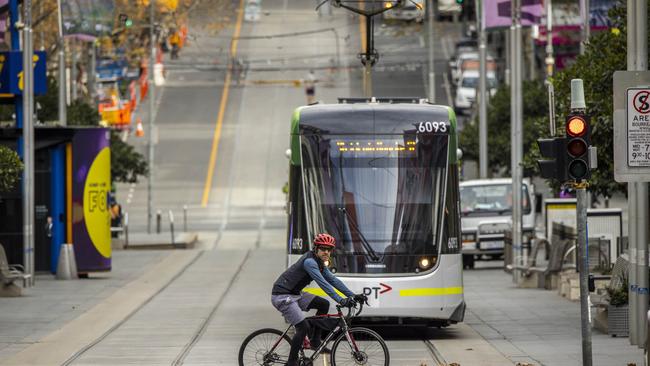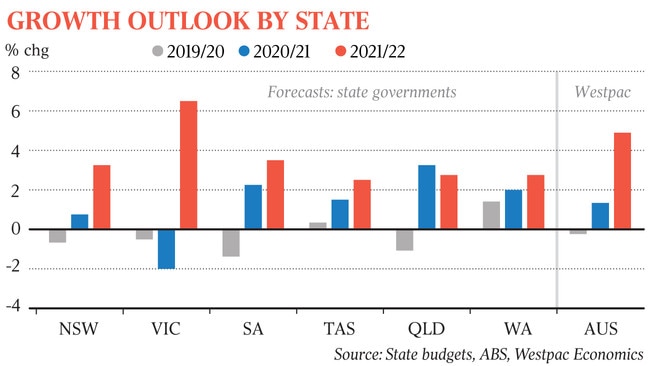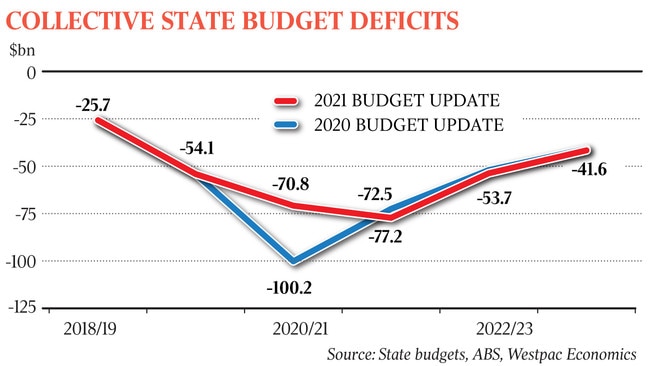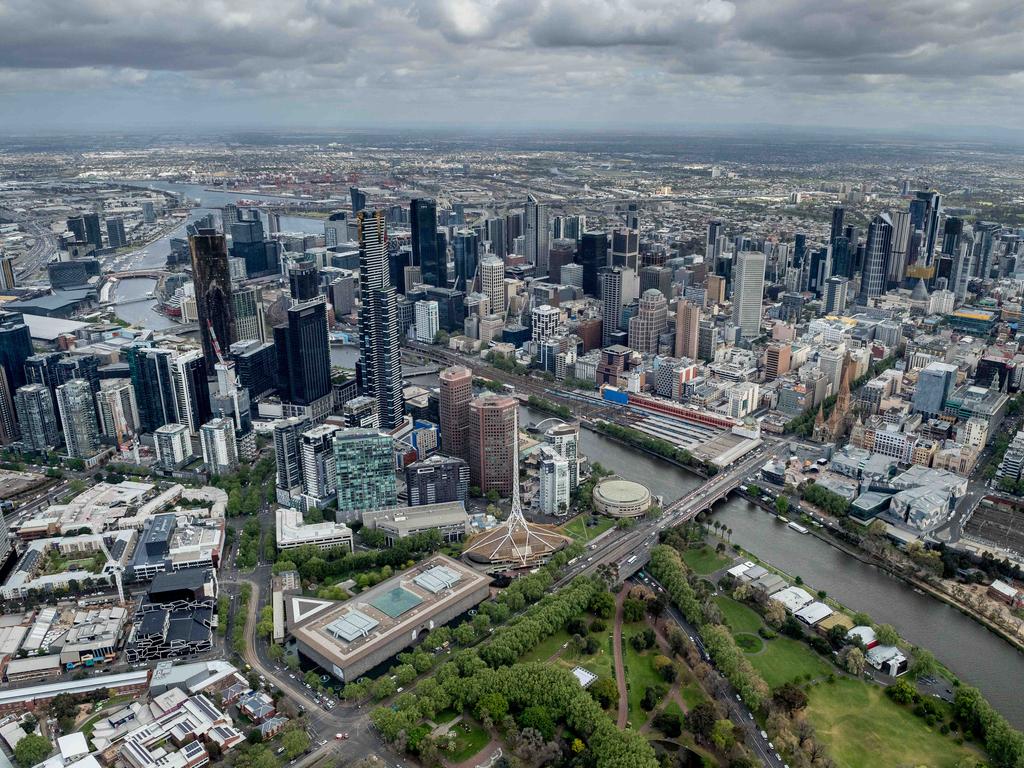Coronavirus: Victoria poised for post-lockdown boom
Victoria will go from the nation’s laggard to leader and be the fastest growing state in the country next financial year.

Victoria will go from the nation’s laggard to leader, with the fastest-growing economy in the country next financial year, as it plays catch-up following last year’s lengthy lockdowns.
Westpac analysis of economic forecasts contained in the latest round of state budgets show pent-up consumer demand in Victoria will drive a 6.3 per cent lift in economic activity in 2021-22.
This is almost double the 3.25 per cent growth anticipated by NSW Treasury for its state, and well ahead of the next strongest performer, South Australia, where officials anticipate growth of 3.5 per cent.
Despite the recurring Covid outbreaks and occasional short lockdowns, Westpac senior economist Andrew Hanlan said the state budget estimates were likely to prove conservative, as they implied national economic growth of 3.9 per cent – well short of around 5 per cent as anticipated by Westpac and the Reserve Bank of Australia.
This also suggested scope for further upgrades – to both the pace of the recovery and the size of the deficits, Mr Hanlan said.

Victoria’s economy remained 0.9 per cent smaller than before the pandemic, according to the March quarter national accounts – the only state to not have returned to its pre-Covid size. Consumption in the state remained 4 per cent below pre-pandemic levels.
But Mr Hanlan said the accelerated growth profile would quickly erase those gaps and see Victoria matching the national recovery by early 2022. Reflecting the fast-paced post-pandemic rebound, the states and territories in the most recent round of budgets revised down their collective deficits in 2020-21 from an estimated $100bn to $70bn – a $30bn improvement in the space of nine months.
Like the commonwealth, the states have chosen not to bank those savings – reflected in a combined deficit for 2021-22 that was revised $4.7bn higher to $77.2bn.
“Rather than have a lower budget deficit, they chose to spend all of that – plus a bit more,” Mr Hanlan said.

Total state net debt according to the new budget estimates was expected to come in at $284bn in 2020-21 instead of $320bn – a $34bn improvement.
That improvement will carry through to the next year, albeit with a larger combined net debt burden of $354bn, rather than the $388bn that was anticipated in the previous round of budgets.
Mr Hanlan said the restrictions announced in Sydney on Friday, as well as Victoria’s two-week lockdown earlier this month, would have an impact, but not enough to derail the ongoing recovery.
“It will be a temporary setback. The worry would be if consumer confidence was undermined on a sustained basis,” he said.





To join the conversation, please log in. Don't have an account? Register
Join the conversation, you are commenting as Logout